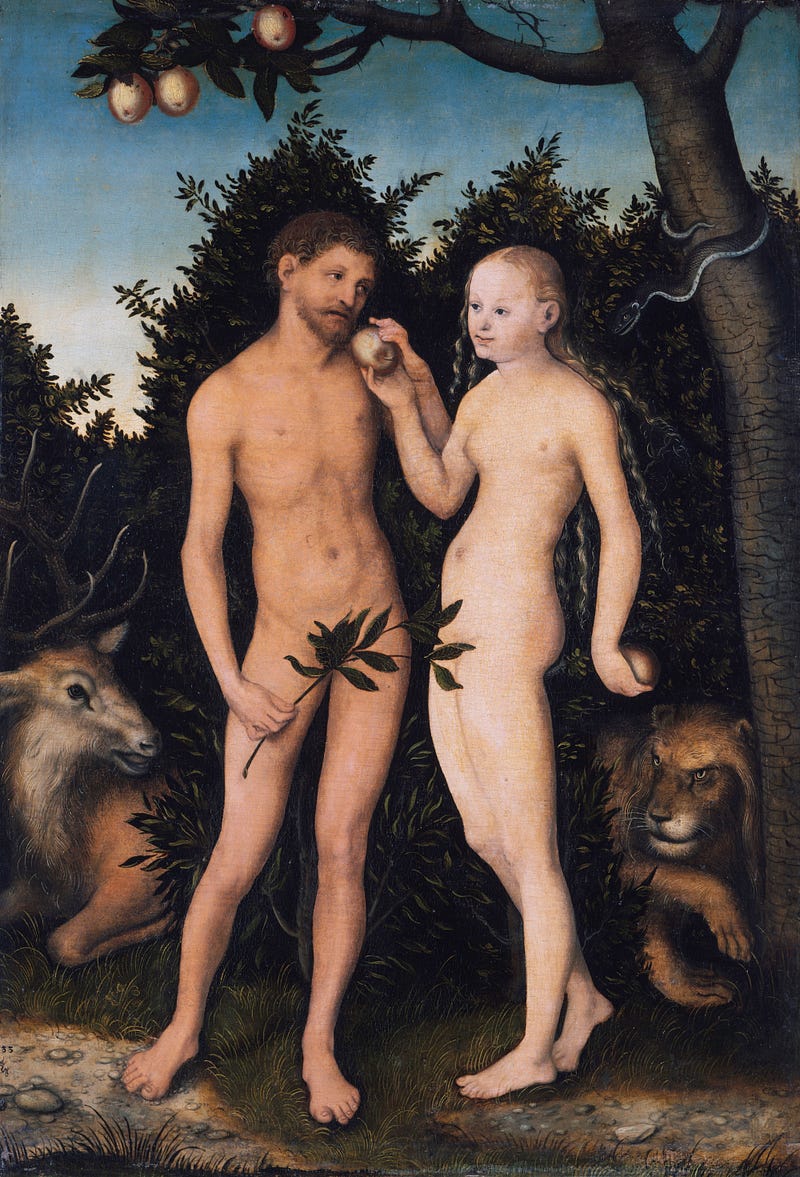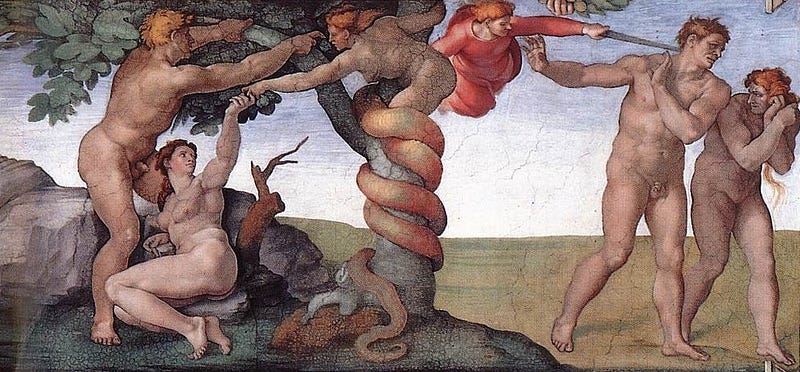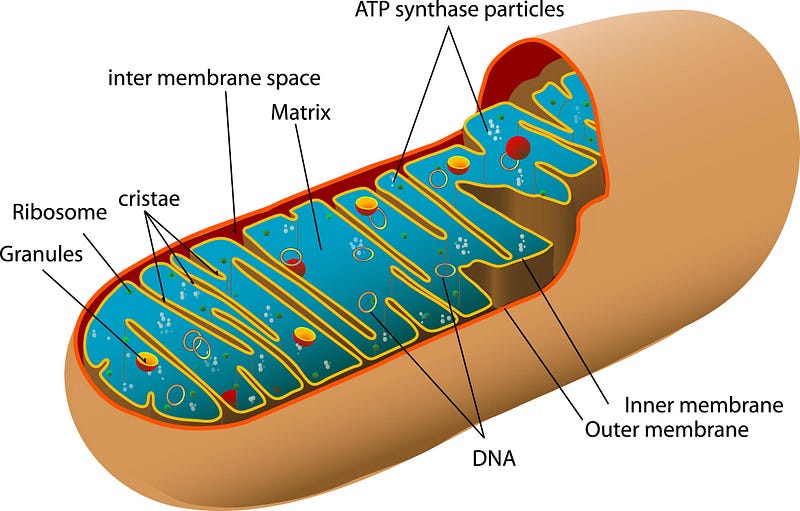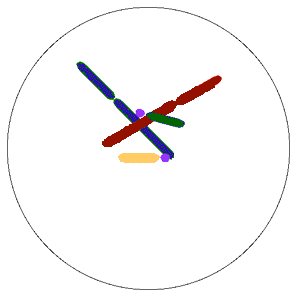Are We All Descended From Just Two Ancestors?
Written on
Chapter 1: A Shared Ancestry
In discussions about our origins, the concept of a common ancestry often evokes the biblical figures of Adam and Eve. However, genetic evidence suggests that this idea is more than just a story; it reflects a profound truth about our lineage.

As we approach a significant election in the United States, the nation appears more divided than at any time since the Civil War. Political debates are prevalent, and differing visions for the future often lead to heated arguments where the humanity of the opposing side is questioned.
While I hold my own strong beliefs, I strive to remember our shared humanity. When tensions rise, I often remind those around me that we all descend from the same two ancestors, suggesting a familial bond that encourages mutual protection.
This often elicits puzzled expressions: "What do you mean by that? It can’t be true."
To address these questions and restore a sense of humanity to our conflicts, I’ll delve into the science behind this assertion.

Have you ever contemplated the identity of your forebears? I’m not referring merely to your grandparents or even the first generation in your family to settle in your country. I mean the vast lineage of your ancestors stretching back hundreds of thousands of years.
Surprisingly, every individual alive today can trace their ancestry back to a pair of distinct forebears—a man and a woman who lived eons ago. These figures, often dubbed "genetic Adam" and "mitochondrial Eve," were not the earliest humans nor were they contemporaries; rather, they existed in different times and locations, separated by millennia.
Yet, through the intricate pathways of genetic inheritance, they are the only two whose genetic material has been preserved in a specific manner within each of us. Yes, every single one of us.
So, how is it that we all can trace our lineage back to these two ancestral figures? And how do scientists arrive at this conclusion? Let’s explore further.

To comprehend this phenomenon, it's essential to understand a bit about DNA. DNA functions like a blueprint, containing all the necessary information for constructing and sustaining our bodies. Think of it as the instructions for a complex LEGO set. While we inherit DNA from both parents, not all DNA is transmitted equally.
First, consider mitochondrial DNA (mtDNA). This DNA resides in the mitochondria—tiny energy-producing structures within our cells. An intriguing aspect of mtDNA is that it is inherited exclusively from the mother. This happens because egg cells harbor numerous mitochondria, while those in sperm are destroyed after fertilization. Consequently, the mtDNA you possess today is a direct legacy from your mother, passed down through her maternal lineage in an uninterrupted chain throughout history.

Next, we have the Y chromosome, responsible for determining male biological traits. If you are male, you possess one X and one Y chromosome, the latter of which you inherited exclusively from your father, who in turn received it from his father, and so forth in an unbroken line of paternal ancestry.
Due to the unique inheritance patterns of mtDNA and the Y chromosome—remaining largely unchanged through generations—scientists have determined they can trace these specific genetic components back through time. By analyzing the accumulation of small mutations in mtDNA and Y chromosomes, researchers have concluded that all humans share a common female ancestor for mtDNA and a common male ancestor for the Y chromosome.

The woman who lived approximately 200,000 years ago is often referred to as "mitochondrial Eve." She was not the only woman of her time, but she is the sole individual whose mtDNA has persisted in all living humans today (see the graphic above for clarification). Similarly, "Y-chromosomal Adam," the man whose Y chromosome is present in all living males, lived between 200,000 and 300,000 years ago. Like Eve, he was not the only man of his era, but his Y chromosome lineage is the only one to have survived.
It is crucial to understand that these two individuals were not extraordinary in any measurable sense. They were not the first humans, nor were they the most successful. In fact, experts estimate that our species, Homo sapiens, existed for tens of thousands of years before mitochondrial Eve and Y-chromosomal Adam.
The survival of their DNA is largely a matter of chance. Consider this: in any given generation, a woman might only have sons, preventing her mtDNA from being passed along. Conversely, a man might have no sons, ending the lineage for his Y chromosome. Over the extensive timeline of human existence, the odds of a specific DNA segment persevering through each generation can be quite slim. Eve and Adam’s genetic material just happened to be among the fortunate few that survived.

You might be curious—if we all share mtDNA from mitochondrial Eve and the Y chromosome from Y-chromosomal Adam, does this imply that all our DNA originates from them as well? Not exactly. In reality, the majority of our genetic composition is derived from numerous other ancestors who lived alongside or even long after these two figures.
It is essential to understand that mtDNA and Y chromosomes only represent a minuscule fraction of our entire genome. They are valuable for tracing these specific lineages due to their stable inheritance patterns, unlike most of our DNA, which undergoes recombination.

What do I mean by this? When egg and sperm cells are formed, the other chromosomes engage in a process known as recombination, where genetic material is exchanged. This mixing complicates the tracing of a clear lineage, as it ensures genetic diversity within a population. However, mtDNA and Y chromosomes largely remain unchanged, enabling us to trace them back to a singular individual.

Recognizing that we all descend from two ancient progenitors may not dramatically alter our daily lives, but it serves as a compelling reminder of our interconnectedness. Despite our vast differences—culturally, geographically, and physically—we share a fundamental genetic bond that unites humanity. This is a notion worth keeping in mind.
This understanding reshapes my perspective on our role in the world. We are part of an unbroken chain of life that extends back hundreds of thousands of years, and our common ancestry highlights the resilience inherent in life itself.
Ultimately, the knowledge that we all originate from these two ancestors is a humbling and intriguing aspect of our shared human narrative.
Chapter 2: Scientific Insights into Our Ancestry
The first video, "Are We All Related?", delves into the genetic bonds connecting us through time, exploring how modern science reveals our shared origins.
The second video, "The Two People We're All Related To," investigates the implications of our ancestry and how it affects our understanding of humanity today.